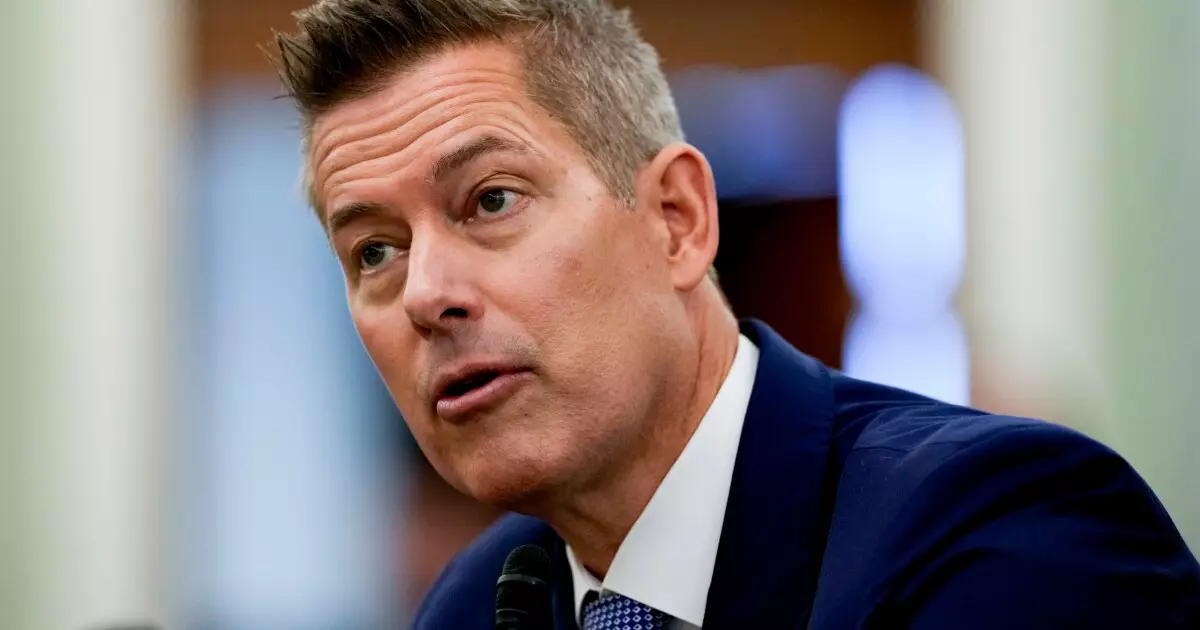In a significant pivot from recent trends, the U.S. Department of Transportation (DOT) is taking steps to return to a simplified method of funding infrastructure projects. Recent statements from U.S. Transportation Secretary Sean P. Duffy outline a commitment toward supporting conventional infrastructure initiatives and distancing the department from the more complex frameworks that have dominated policy during the previous administration. This shift signals a focus on existing highways, roads, and bridges, rather than a preoccupation with intangible environmental agendas that often distract from real-world infrastructure needs.
This change marks a break not just from fiscal ambiguity, but from the overreach that had sought to enforce environmental and social benchmarks that many argued fell outside the scope of transportation policy. The emphasis is on “back to basics,” a phrase that resonates with those who believe in the importance of foundational infrastructure for economic growth and societal safety. While environmental concerns can be valid, they shouldn’t wrest control from the primary goal of the transportation sector: the safe movement of people and commerce.
Unraveling the Complexities of Green Initiatives
One of the crucial points driving this new direction is the DOT’s decision to rescind two memorandums created during the Biden Administration concerning greenhouse gas emissions and equity initiatives. This rescission restores clarity to a construction sector that had been left jittery amidst shifting policy landscapes. Builders and transport officials alike are expressing their relief; they can now re-engage in development projects without the shadow of unpredictability looming over them.
While the intentions behind such environmental initiatives were undoubtedly noble, the bureaucratic complications they spawned often created more hurdles than solutions. Lawmakers, tradesmen, and state departments hailed this rollback as a necessary move to cut through red tape, remarking on how complex funding structures paired with mandatory matching grants from local municipalities often hampered progress rather than spurred it.
Grassroots Decision-Making at the Forefront
The focus on state-driven decision-making stands as a fundamental tenet of this renewed funding vision. For too long, the federal government imposed conditions that did not necessarily align with local realities. The desire for a more grassroots approach embodies a sensibility that local departments know their areas best. Formula funding, long neglected, is not merely a bureaucratic solution but a forward-thinking approach to bespoke infrastructure development tailored to regional needs.
The American Association of State Highway and Transportation Officials emphasizes this very point, reaffirming its dedication to supporting frameworks established for over a century. Ensuring the viability of the Highway Trust Fund, especially in light of dwindling gas tax revenues—unadjusted since 1993—is an urgent financial necessity. Decision-makers are finally recognizing that the pathway to responsible infrastructure sustenance lies in trusting states to dictate their priorities without heavy federal intervention.
Addressing Modern Transportation Challenges
Yet, amidst a harmonious shift toward sensible funding, the DOT faces pressing real-world challenges. A concerning rise in traffic incidents coupled with alarming safety reports at airports calls for urgent reassessment of priorities. People rightly expect their government to ensure not just the functionality but also the safety of transportation networks. As Secretary Duffy announced an investigation into allegations related to diversity, equity, and inclusion hiring practices at the FAA, it becomes increasingly evident that undercurrents within the agency may hinder progress.
In an age marked by rapid technological advancements, such as electric vehicles that do not contribute to fuel tax coffers, the need for a refined policy landscape is aliased with urgency. Both the House and Senate are voicing support for corrections aligned with traditional infrastructure needs rather than ideological frameworks that could disrupt operational efficacy.
The Path Forward: Keeping Eyes on the Road
As this new paradigm of funding takes shape, it will require a collective will to keep on course. Lawmakers, transport officials, and builders alike must stay focused, avoiding the pull of diversity initiatives that could divert attention away from pressing infrastructural needs. It is a pivotal moment within the DOT’s trajectory—a chance to stabilize and innovate simultaneously. As the ground settles amidst these changes, it is essential for stakeholders to foster an environment that prioritizes accountability and prioritizes the fundamentals. Only then will true progress emerge in reimagining America’s transportation landscape.


Leave a Reply